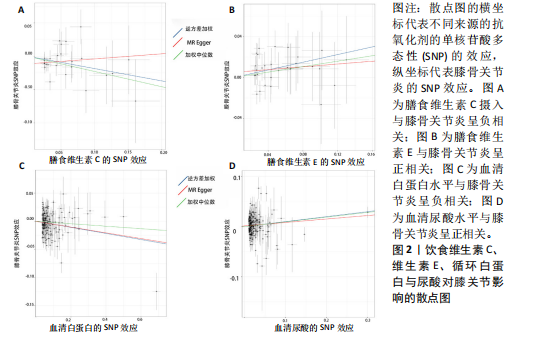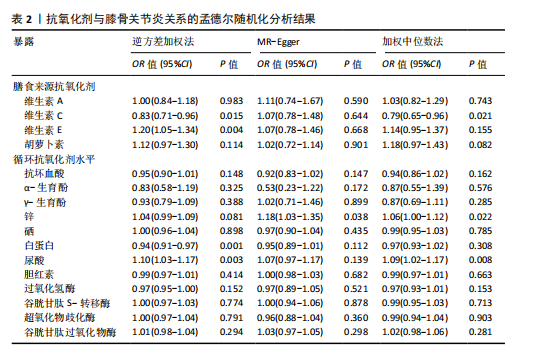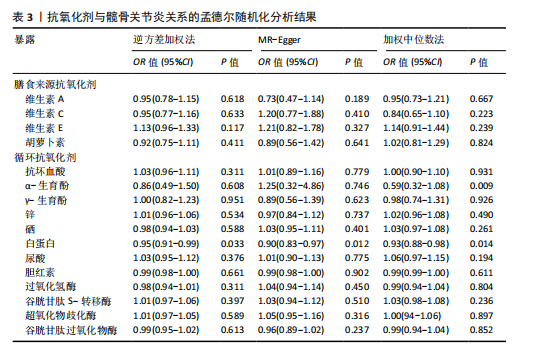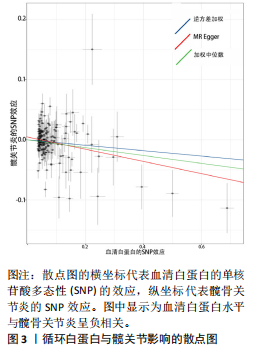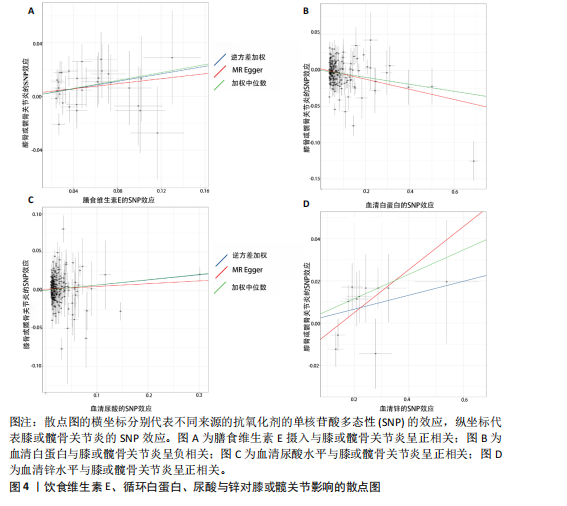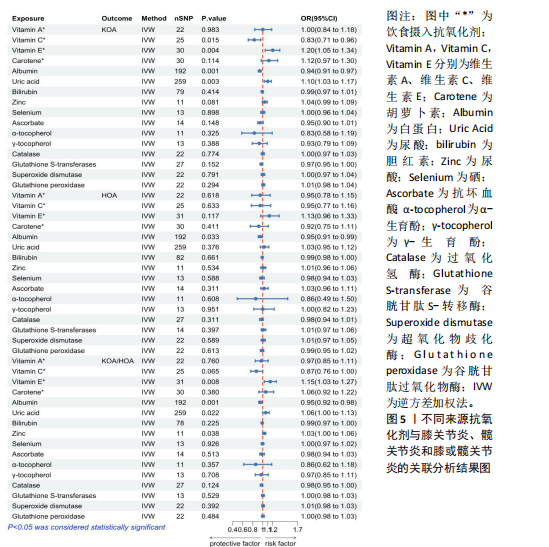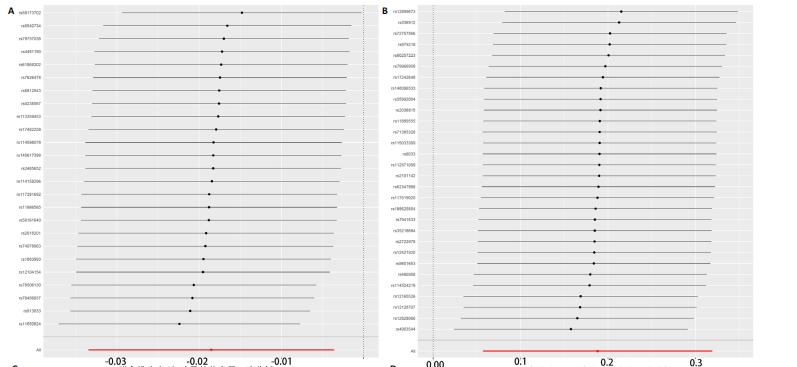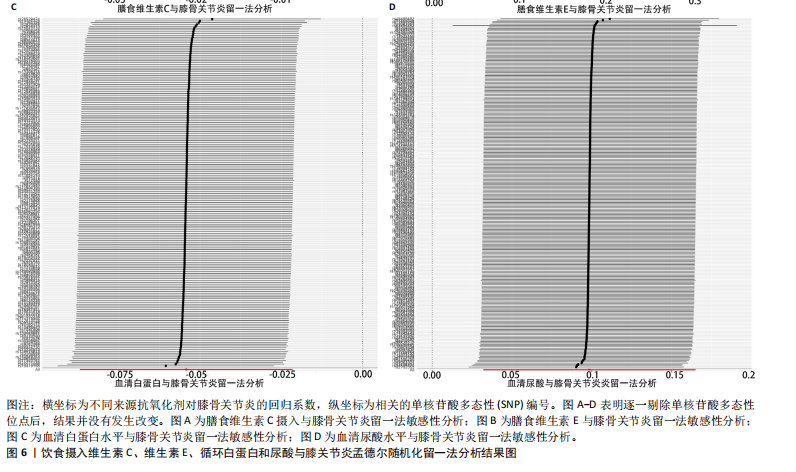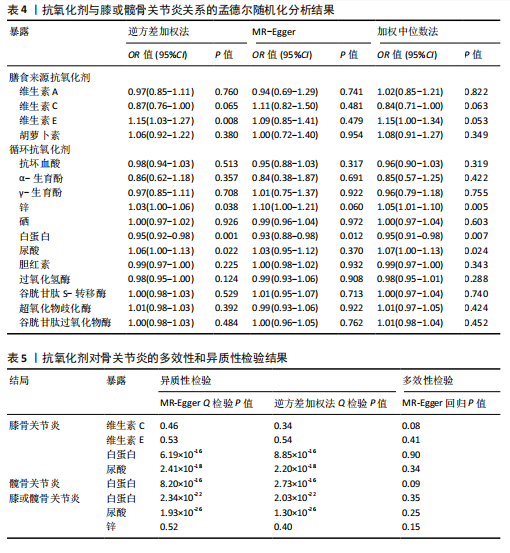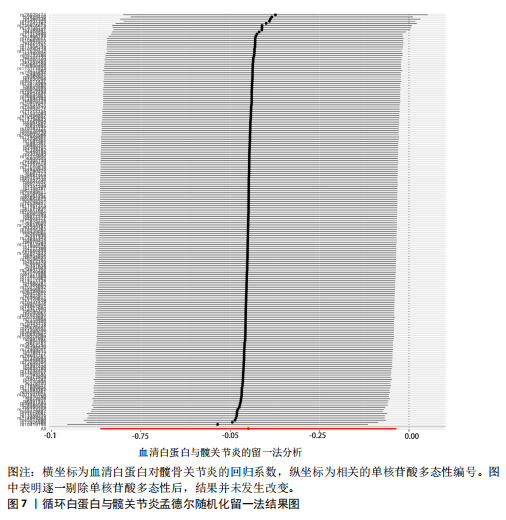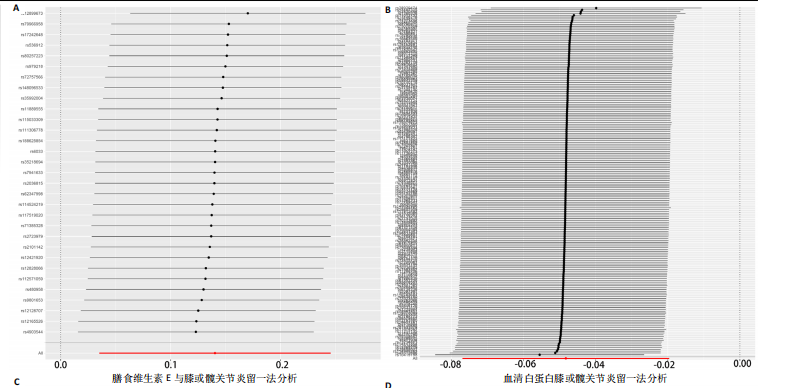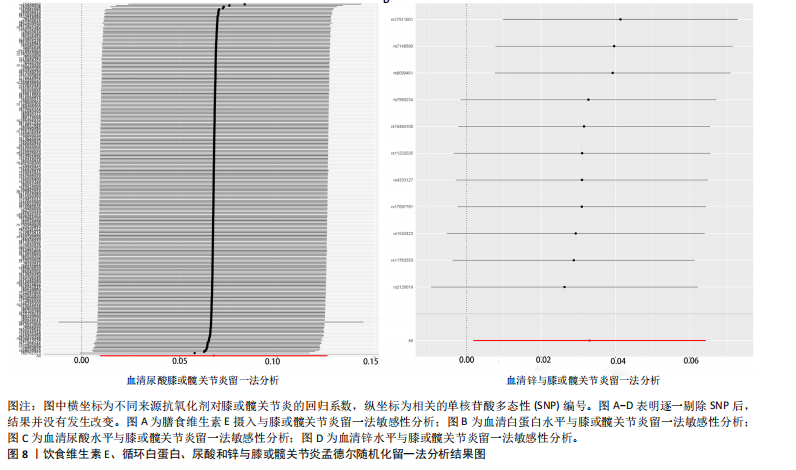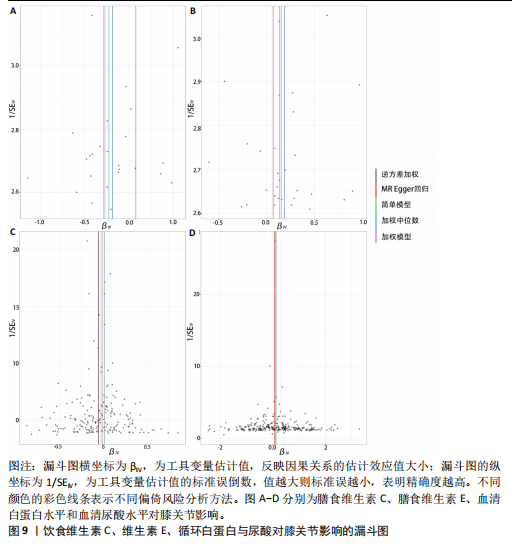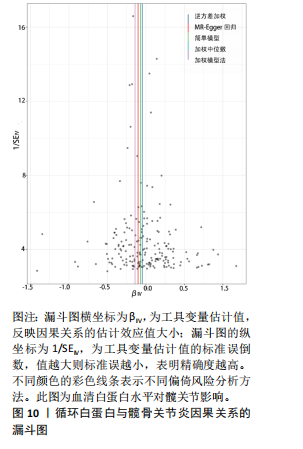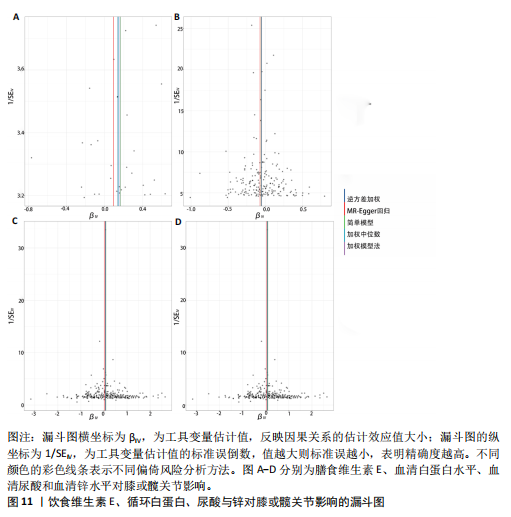[38]
PIERCE BL, BURGESS S. Efficient design for Mendelian randomization studies: subsample and 2-sample instrumental variable estimators. Am J Epidemiol. 2013; 178(7):1177-1184.
[39] BOWDEN J, DAVEY SMITH G, HAYCOCK PC, et al. Consistent estimation in mendelian randomization with some invalid instruments using a weighted median estimator. Genet Epidemiol. 2016;40(4): 304-314.
[40] AU YEUNG SL, GILL D. Standardizing the reporting of Mendelian randomization studies. BMC Med. 2023;21(1):187.
[41] 谭文岳,韦柏安,王树声,等.甲状腺功能障碍与前列腺癌的因果关联:两样本孟德尔随机化研究[J].重庆医科大学学报,2023,48(8):935-939.
[42] ANSARI MY, AHMAD N, HAQQI TM. Oxidative stress and inflammation in osteoarthritis pathogenesis: role of polyphenols. Biomed Pharmacother. 2020;129:110452.
[43] CHIN KY, IMA-NIRWANA S. The role of vitamin E in preventing and treating osteoarthritis - a review of the current evidence. Front Pharmacol. 2018;9:946.
[44] LIU L, ZHANG W, LIU T, et al. The physiological metabolite α-ketoglutarate ameliorates osteoarthritis by regulating mitophagy and oxidative stress. Redox Biol. 2023;62:102663.
[45] COLLETTI A, CICERO AFG. Nutraceutical approach to chronic osteoarthritis: from molecular research to clinical evidence. Int J Mol Sci. 2021;22(23):12920.
[46] CHIU PR, HU YC, HUANG TC, et al. Vitamin c protects chondrocytes against monosodium iodoacetate-induced osteoarthritis by multiple pathways. Int J Mol Sci. 2016; 18(1):38.
[47] BARLIAN A, JUDAWISASTRA H, ALFARAFISA NM, et al. Chondrogenic differentiation of adipose-derived mesenchymal stem cells induced by L-ascorbic acid and platelet rich plasma on silk fibroin scaffold. Peer J. 2018;6:e5809.
[48] CHIN KY. Updates in the skeletal and joint protective effects of tocotrienol: a mini review. Front Endocrinol (Lausanne). 2024; 15:1417191.
[49] SANCHEZ-LOPEZ E, CORAS R, TORRES A, et al. Synovial inflammation in osteoarthritis progression. Nat Rev Rheumatol. 2022; 18(5):258-275.
[50] CAROCHO M, FERREIRA IC. A review on antioxidants, prooxidants and related controversy: natural and synthetic compounds, screening and analysis methodologies and future perspectives. Food Chem Toxicol. 2013;51:15-25.
[51] PEARSON P, LEWIS SA, BRITTON J, et al. The pro-oxidant activity of high-dose vitamin E supplements in vivo. BioDrugs. 2006;20(5):271-273.
[52] SATO T, IIDA K, OHKAWA T, et al. Relationship between ankle-foot-complex mobility during static loading and frontal moment impulses of knee and hip joints during the stance phase. Gait Posture. 2024;108: 301-306.
[53] HALL M, VAN DER ESCH M, HINMAN RS, et al. How does hip osteoarthritis differ from knee osteoarthritis? Osteoarthritis Cartilage. 2022;30(1):32-41.
[54] LU Z, PU C, ZHANG Y, et al. Oxidative stress and psychiatric disorders: evidence from the bidirectional mendelian randomization study. Antioxidants (Basel). 2022;11(7):1386.
[55] CHOE H, KOBAYASHI N, ABE K, et al. Evaluation of serum albumin and globulin in combination with c-reactive protein improves serum diagnostic accuracy for low-grade periprosthetic joint infection. J Arthroplasty. 2023;38(3):555-561.
[56] LI T, ZENG J, MIAO X, et al. Association between serum albumin with geriatric nutritional risk index and osteopenia in Chinese elderly men: a nested case-control study. Asia Pac J Clin Nutr. 2024;33(4):569-580.
[57] TANG Y, XU X, ZHANG S, et al. Genetic liability for diet-derived circulating antioxidants, oxidative stress, and risk of osteoarthritis: a Mendelian randomization study. Front Nutr. 2023;10:1233086.
[58] XU Y, CAO X, ZHAO H, et al. Impact of camellia japonica bee pollen polyphenols on hyperuricemia and gut microbiota in potassium oxonate-induced mice. Nutrients. 2021;13(8):2665.
[59] ZHOU H, SHEN X, YAN C, et al. Extracellular vesicles derived from human umbilical cord mesenchymal stem cells alleviate osteoarthritis of the knee in mice model by interacting with METTL3 to reduce m6A of NLRP3 in macrophage. Stem Cell Res Ther. 2022;13(1):322.
[60] NISHIZAWA H, MAEDA N, SHIMOMURA I. Impact of hyperuricemia on chronic kidney disease and atherosclerotic cardiovascular disease. Hypertens Res. 2022;45(4):635-640.
[61] CIOSEK Ż, KOT K, ROTTER I. Iron, zinc, copper, cadmium, mercury, and bone tissue. Int J Environ Res Public Health. 2023; 20(3):2197.
[62] WEN X, WANG J, PEI X, et al. Zinc-based biomaterials for bone repair and regeneration: mechanism and applications. J Mater Chem B. 2023;11(48):11405-11425.
[63] SCHOOFS H, SCHMIT J, RINK L. Zinc toxicity: understanding the limits. Molecules. 2024; 29(13):3130.
[64] LI G, CHENG T, YU X. The impact of trace elements on osteoarthritis. Front Med (Lausanne). 2021;8:771297.
[65] KITABAYASHI C, FUKADA T, KANAMOTO M, et al. Zinc suppresses Th17 development via inhibition of STAT3 activation. Int Immunol. 2010;22(5):375-386.
[66] DENOBLE AE, HUFFMAN KM, STABLER TV, et al. Uric acid is a danger signal of increasing risk for osteoarthritis through inflammasome activation. Proc Natl Acad Sci U S A. 2011;108(5):2088-2093.
[67] SHI H, WANG H, YU M, et al. wai Serum trace elements and osteoarthritis: a meta-analysis and Mendelian randomization study. J Trace Elem Med Biol. 2024;86:127520.
[68] CUI A, XIAO P, WANG P, et al. No genetic causal association between circulating alpha-tocopherol levels and osteoarthritis, a two-sample Mendelian randomization analysis. Sci Rep. 2024;14(1):10099.
[69] PATTISON DJ, SILMAN AJ, GOODSON NJ, et al. Vitamin C and the risk of developing inflammatory polyarthritis: prospective nested case-control study. Ann Rheum Dis. 2004;63(7):843-847.
[70] CANTER PH, WIDER B, ERNST E. The antioxidant vitamins A, C, E and selenium in the treatment of arthritis: a systematic review of randomized clinical trials. Rheumatology (Oxford). 2007;46(8): 1223-1233.
[71] SEKI T, HASEGAWA Y, YAMAGUCHI J, et al. Association of serum carotenoids, retinol, and tocopherols with radiographic knee osteoarthritis: possible risk factors in rural Japanese inhabitants. J Orthop Sci. 2010;15(4):477-484.
